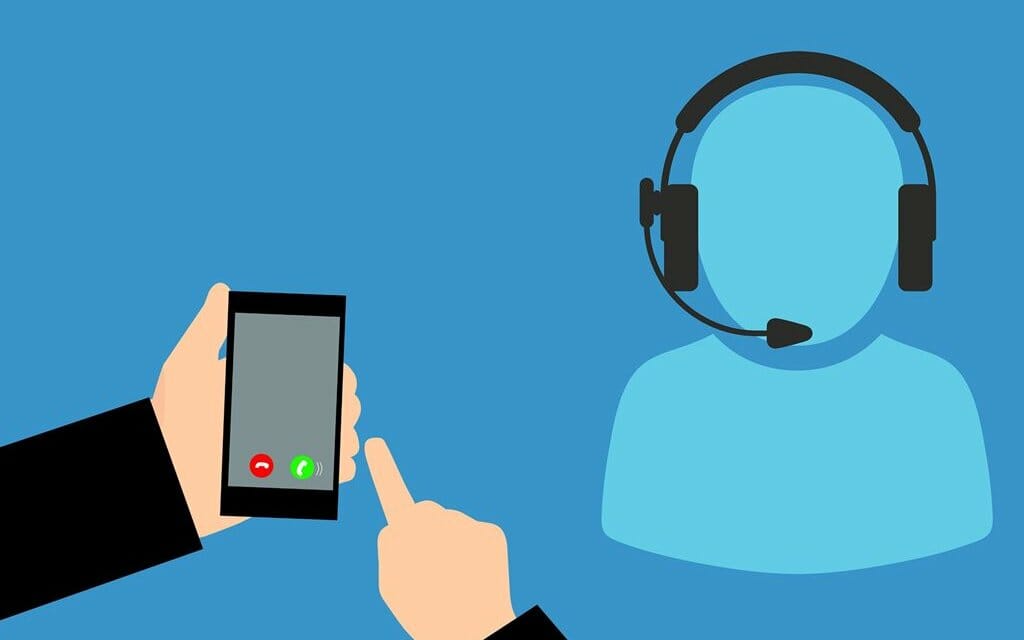
Outsourcing Customer Service In 2023

Five trends of outsourcing customer service in 2023
Customer service, help desk, and IT support were always among the tasks most often delegated to third parties. The main reason for outsourcing was the same – to cut expenses. In 2023, the situation is a bit different, though. MWDN experts have picked five main trends in customer service outsourcing for 2023. But first, let’s remind ourselves how it all started.
A reference point – the first outsourcing call centers
The first customer support services appeared in the 1980s when personal computers started to emerge. These departments were called “telemarketing” as they were considered an extension of classic marketing. The term “call center” appeared only in the 1990s.
The outsourcing of customer services started in the late 90s. The beginning of the 2000s can be considered the time when modern call centers, as we know them now, emerged. Businesses decided to outsource customer support for several reasons:
- customer support has evolved from an “extra perk” into a necessity for business, so companies needed to scale their support departments fast;
- clients wanted to receive better customer service and didn’t want to “hold the line” while waiting for an operator;
- clients disliked the automated solutions of the 2000s and wanted to talk to human beings;
- clients wanted to be served in their native language;
- the minimum hourly salary in the US, Western Europe, or Canada was much higher than in Asian, African, or Eastern European countries.
These are how things used to be two decades ago. In 2023, though, the customer service changes again.
The present and the near future of customer support
Tech giants like Google and Amazon outsource their customer service to third parties all around the globe. Quite often, large enterprises have distributed support teams in all regions where their business operates. They do so to provide their clients with customized and multilingual support. The need to please demanding clients is the utmost reason behind all the recent changes in customer support and new trends that will continue to develop in 2023 and above.
1. Support in all possible messengers
Years before, a customer support team was a call center with corded phones. Now, most support centers are multi-channel – you can make a call, email, write a direct message, and even use messengers from your personal social media as communication channels. Businesses, in their turn, should better have Facebook Messenger, WhatsApp, WeChat, Telegram, Snapchat, and other communication tools switched on to their support department.
Today, thanks to fancier and better-protected databases, you can start messaging the support team of any e-commerce website from your Google or Facebook account, and the person on the other side will immediately know the number and the details of your order.
2. Customer service is a part of the user experience
Modern customer support departments work in tight cooperation with sales and marketing teams. Salespeople, advisors, and consultants of the world before the Covid pandemic have now become digital helpers and support team members. Today they work with phones and keyboards, and they have to provide the same high level of service as they used to when they worked in malls and shops. Support team members have a precise communication algorithm developed to provide clients with the best possible user experience and the most efficient resolution of their queries.
24/7 support is another part of a good user experience that has become necessary in recent years. Night shifts are usually much more expensive than day shifts, but it doesn’t mean that you have to increase your budget for the support department to broaden the working hours of your business. You can opt for offshoring instead and hire a distributed support team whose representatives will live in different time zones and will be able to cover all 24 hours without overworking or going on night shifts.
3. Robotization and automatization of repeated processes
Before approaching a human operator, a customer of 2023 has to answer up to ten questions. These questions create a funnel that takes a client to an operator who knows everything about the issue in question.
Businesses usually automatize the initial “interview” with the client as this tool incredibly minimize the time spent by the support member per customer and narrow the volume of information a support member should memorize to get admitted to the job. The most common type of robotization and automation of customer services are chatbots with simple sequences of if-else conditions.
4. AI chatbots
Chatbots based on artificial intelligence and machine learning are the ultimate support tools of the present and the near future. According to the Turing rule, you can consider AI successful when you cannot understand whether you speak to a computer or to a human being. As a matter of fact, almost half of the people who have experienced communication with modern chatbots cannot recognize if they are speaking to an algorithm or a human being.
Overall, modern chatbots can efficiently cover more than 70% of the most frequent questions and queries of your customers. Apart from being free of direct labor costs, smart chatbots can also boost the productivity of customer service, improve the UX of clients (at least, clients don’t have to listen to simple melodies while waiting for a free operator), and drastically increase the scalability of customer support service.
5. Natural language processing
One of the pioneers in NLP technologies was Amazon with its Alexa, which it first demonstrated in 2014. Unfortunately, since the first success, not much innovation was added to the technology that happened to be a bright part of the Amazon business but also one of the most expensive ones. By November 2022, Amazon was disappointed in its NPL turmoil and too little ROI and sacked plenty of developers and researchers from the department.
Amazon’s failure, though, doesn’t mean that the NLP technology will stop developing. Moreover, even the current state of natural language processing technologies allows customer support and help desk departments provide their clients with the most personalized communication experience.
New technologies might still need amendments and further research to understand humans better. The reasons why are well described in this video.
However, we believe that the problem with technology understanding people will disappear during this decade.
Two approaches to outsourcing customer service
Today, some companies still opt for (1) traditional old-fashioned outsourcing of their support services. As a rule, these are US-based businesses that optimize their expenses by offshoring customer support to countries with much lower hourly wages than in their local labor market. As a result, they get up to 70% cut of direct labor expenses with non to little loss of service quality.
International companies, like airlines, that want to communicate with their clients in their native languages also often opt for delegating customer services to distributed support teams around the globe.
On the other hand, technological companies that want to be on the verge of innovations and implement high-tech solutions opt for (2) professional software assistance with their support services automation. Of course, this approach might be more expensive initially, but it will surely pay off in the long run.
MWDN prediction for the decade: AI chatbots that cover 99% of your customers’ queries, support software that answers your clients immediately, automated solutions that sound like humans, and multilingual 24/7 support for every company that can afford it.
How to optimize and innovate your support department in 2023?
If you want to start outsourcing customer support and other IT services in 2023, you certainly know your “whys,” so let’s focus on “hows.”
Optimize your in-house team.
Even if you fully automize custom service, you will still need at least 10% of your support staff to deal with unusual queries that cannot be algorithmized. Select your most promising people and invest in their further development.
Determine the strong and weak points of your support team.
This will help you understand which aspects of your team will have to be reinforced with technologies or distributed teams.
Choose between buying software and developing one of your own.
The software market already offers some ready-to-use business solutions for your customer support. At the same time, IT vendors insist on the necessity of having a personalized support solution for your company. What would you prefer?
Find a partner, not a vendor.
When choosing a third party to work on your strategic development, opt for a partnership, not client-vendor relations. In other words, instead of cooperating with an outsourcing company that offers fixed bids, find a reliable outstaffing partner to reinforce your in-house tech team with their vast expertise and unique skills.
Summing up
Living in 2023, we must look into the future and use new technologies for business optimization and expense decrease. With the labor market going global and the moral principles of the company gaining importance for customers, there might soon be no opportunity to cut costs by hiring “cheaper” employees from other continents.
Now is the time to reduce expenses by being smarter than your competitors and choosing new technologies like artificial intelligence, machine learning, natural language processing, and robotic process automation.
MWDN, an outstaffing company with offices in Warsaw and Kyiv, is here to help. Boost innovation, reinforce your customer service department, and make your business smarter with the help of our skilled software developers.
























